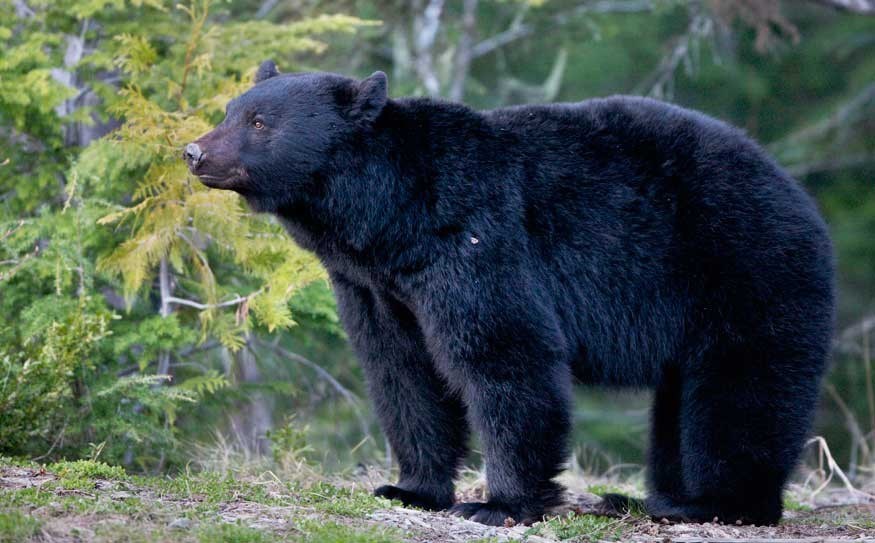Early May has seen a wave of increased bear activity through Whistler Valley and along Highway 99.
From the Alice Lake turn-off to Green Lake, a minimum of 40 black bears (20 M,11 F, and six yearlings), and three cubs have been identified from April to May 9. Female activity (especially if they have cubs) has been delayed coming out from the dens because of temperatures dropping below normal, which slowed the rate of snowmelt.
Of those 20 male bears, five are dominant males. Most males are in the young adult age class (< 10 years) and are skinny. Coats are in good shape, but these are generally the skinniest males I have seen in the last several years, which is not surprising given 2011's poor berries.
Bears normally emerge with "circles" of hair loss around the eyes and down their muzzle caused from external parasites that "host" the bear during denning. One large male has a completely bald face, but the hair does grow back by summer. As well, stress from being underweight and weak can cause larger areas of hair loss.
Eight male bears have been identified along Highway 99 from Function Junction to BOB/Culliton Creek. A double-tagged mother with two yearlings, a single-tagged mother with two tagged yearlings, and three unidentified younger bears are active just south of Function Junction.
Of the 17 known ski area females, six have been identified: Bella, Alice and Michelle from Blackcomb have no cubs while Amy from Blackcomb emerged with two yearlings (black and brown 2011 cubs). You will recognize Amy from Spruce Grove and Lost Lake areas last year. She continues to limp, but the right foreleg is now weight bearing, which is a good sign from past injuries.
Elly from the Whistler Bike Park looks good, but has no cubs while Brownie from Whistler's west-slope (Creekside) has a reported three cubs-of-the-year.
I have confirmed Brownie is lactating but the cubs were only seen close to dark. My niece, Danielle, first reported seeing them walking as a family — three cubs in tow. This is Brownie's fourth litter for 10 cubs total since 2007 — very productive.
Survival, however, has been low. The first two litters of five cubs were lost during the breeding season so I assumed males (were to blame). And when there is too much snow on the ski trails, Brownie moves to the valley to graze, and having to cross Highway 99 several times with small nervous young makes life perilous. She has lost two more cubs to vehicles.
Please understand that when you drive through Whistler Valley bears can cross the highway anywhere, but Nesters, the Whistler Golf Course, the big swamp below Nordic, and just south of Creekside before Bayshores are the most frequent areas of Highway 99 bear crossings. So use caution, especially during evening hours. If you see a bear at the edge of the highway slow down and be prepared to compensate for their sudden crossing and watch for cubs or yearlings.
Callaghan bears are slowly emerging with four bears active so far and one light brown immature bear reported dead, likely from an over-wintered mortality due to starvation.
Warmer, seasonal temperatures into mid-May will increase daily bear grazing activity, making it easier to sight and identify remaining males. The remaining 11 resident females including those with cubs, should be identified by late May.
Whistler will see a smaller bear population this year due to a two-year spike (2010-11) in mortality from poor berry crops that forced higher conflicts with garbage and vehicle collisions on Highway 99. In spring, a concentration of bears in Whistler Valley can give the impression that we have a higher abundance of bears than actual numbers indicate because the mountain snowpack keeps bears at low-elevation food sources into early summer.
Thanks to everyone who reported bears and sent in photos. I continue the spring bear count into the breeding season. Any questions contact me at mikebear@look.ca




